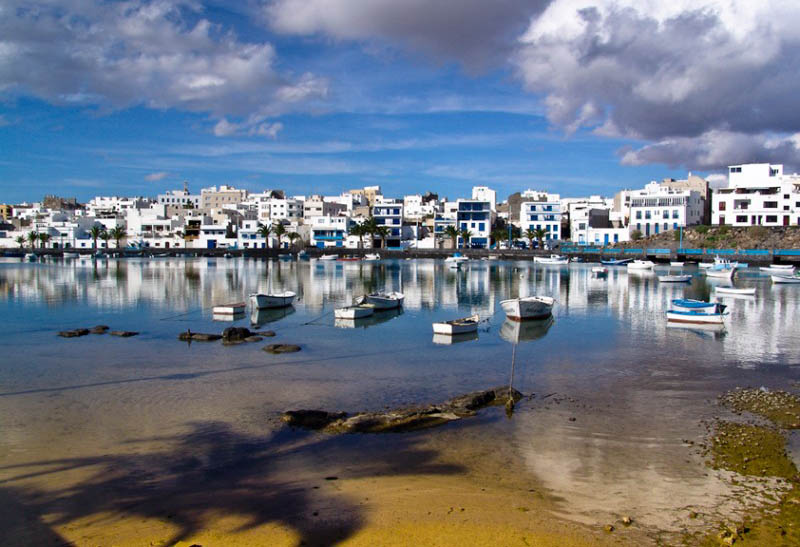The history of Arrecife is full of notable and solemn events. You know, that there used to be three Guanche settlements here, and the first Spanish settlers appeared in the 16th century. Due to frequent attacks by pirates, Arrecife, however, was not the safest place on the island and that is probably why it did not attract too many new settlers for a long time.. The port center began to develop intensively only in the 19th century., when the pirate attacks stopped, a trade carmine (tooth. frame Red gold from the Canary Islands) has developed on a large scale. A new era in the city's history was sealed with the transfer of the capital from Teguise in 1852 r.
Museums
By far the most important museum in Arrecife is set in the 18th century fortress Museo Internacional de Arte Contemporaneo Castillo de San Jose (Museum of Contemporary Art MIAC). The facility was established near Puerto Naos (30 min walk north of the center of Arrecife) w 1976 r., obviously inspired by Manriae. Inside, you can admire works by Canarian and international artists, such as Antoni Tapies, Diego Rivera, Juan Frances and of course Cesar Manriae. The museum houses one of the best restaurants on the island.
In former warehouses (warehouse), which were restored according to Manrique's instructions, ulokowano Insular Center of Culture The Warehouse (El Almacen Cultural Center), in which they are organized
exhibitions, concerts and film screenings (very often in the original language). The current program of cultural events is available at www.cabildodelanzarote.com.
The Casa de Cultura Agustm de la Hoz is not far from the center, where concerts and exhibitions take place. It is worth seeing the seat of the facility, even if there was no exhibition inside. The beautiful building is a perfect example of typical 19th-century bourgeois architecture.
Beaches
There are three sandy beaches in Arrecife itself. The largest of them is the almost half-kilometer long Playa del Reducto – despite its location in the city center, it is extremely clean (it has been awarded the blue flag several times) and relatively rarely visited. The other two are located near the Castillo de San Gabriel and the stone Puente de las Bolas, from which the young inhabitants of Arrecife jump into the blue water. 2 km south of Arrecife (access via promenade from Playa del Reducto) there is a nice 300 meters long El Cable.
